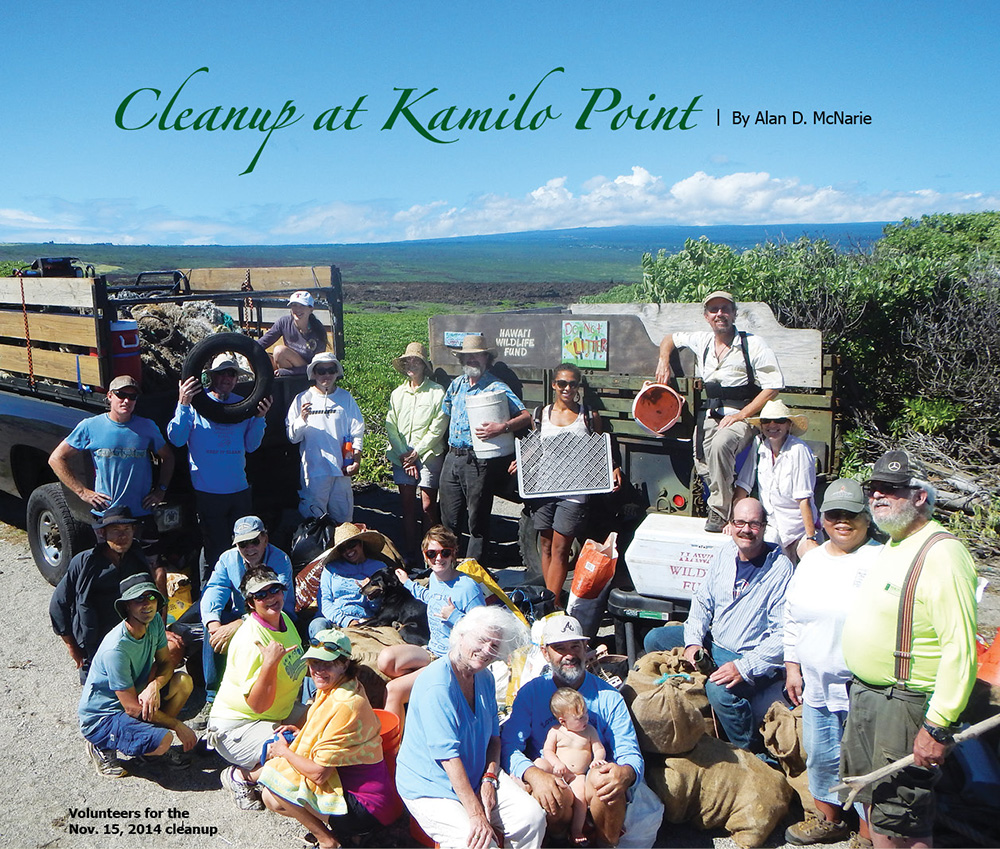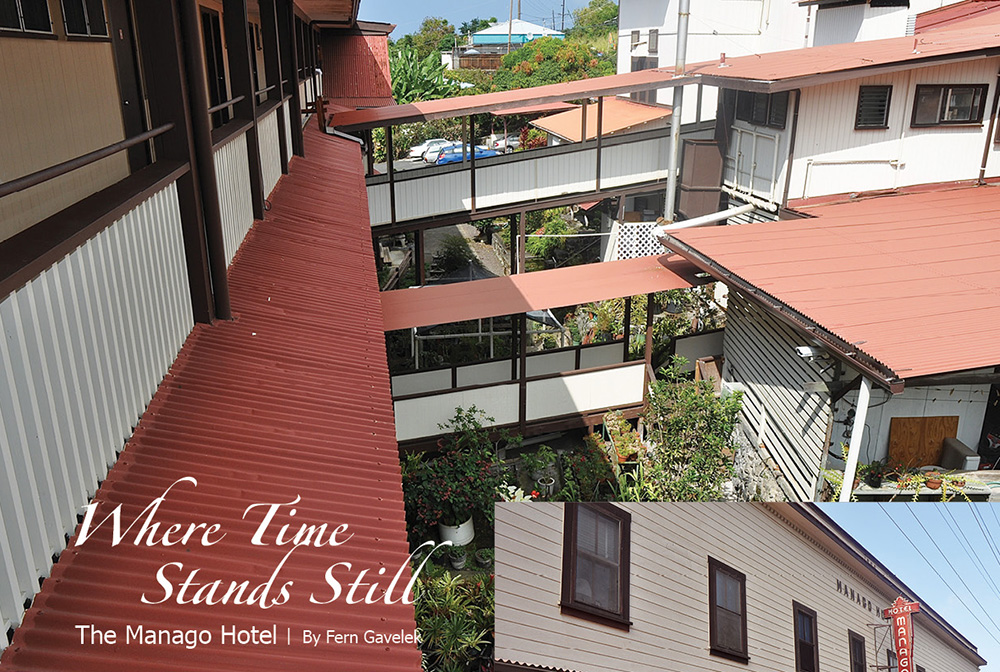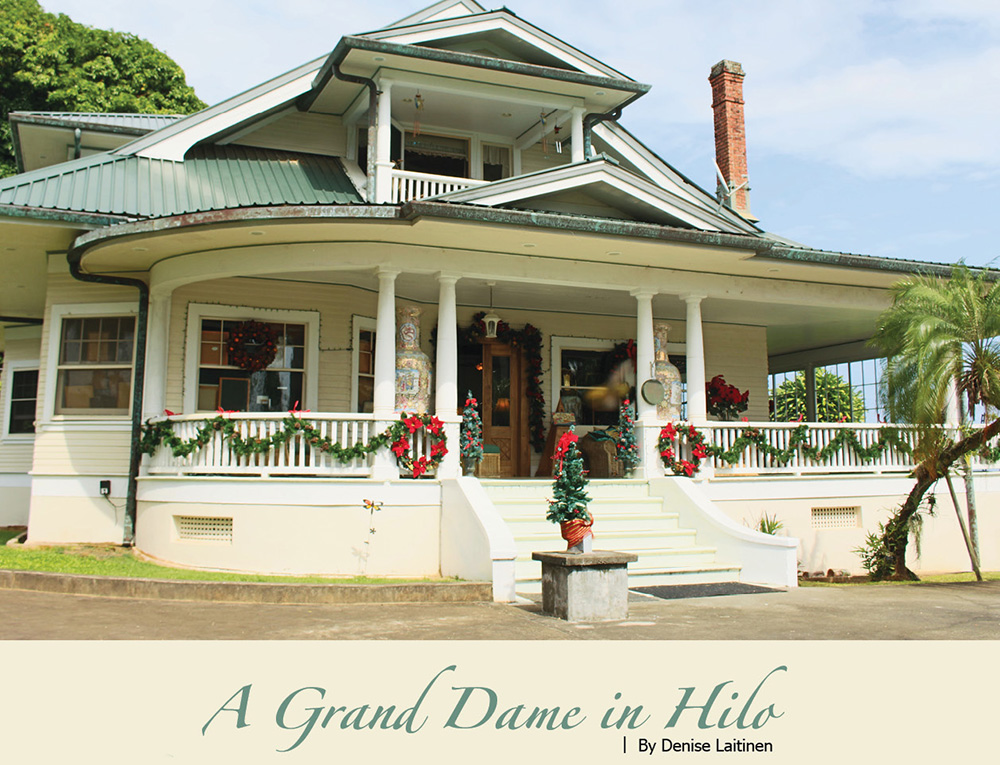
Cleanup at Kamilo Point

By Alan D. McNarie
Kamilo Point isn’t what it used to be. And that’s a good thing. It used to be a lot worse.
This remote stretch of Ka‘ū coastline near South Point gained infamy in the 1990s as the dirtiest beach in Hawai‘i—though little if any of the trash here was from local residents. It can only be reached by a spine-twisting, half-hour ride over eroded, unpaved roads—a ride I’m experiencing today, in order to see the notorious “Plastic Sand Beach” for myself.
I’m riding shotgun in a decrepit Suburban that was donated to the Hawai‘i Wildlife Fund: part of a motley caravan of four-wheel-drive vehicles hauling 39 volunteers and their gear for yet another cleanup of the marine debris that constantly drifts ashore in this area.
“Look at that cave!” exclaims Catherine Spina, referring to an enormous washout that she’s swerving around at the moment.
A wiry five-foot-four bundle of enthusiasm and information, Catherine is the Wildlife Fund’s research and outreach specialist. She knows this road intimately—she nearly wore out a University of Hawai‘i vehicle on it while doing her master’s degree research on the beach debris. And recent rains in Ka‘ū have resculpted the road with brand new hazards.
As we reach the coast, the weed-choked pastureland through which we’ve been traveling suddenly transforms into a whole different ecosystem, dominated by native plants: naupaka with its little white half-flowers; hau, a native yellow-flowering hibiscus; heliotrope, with its clusters of tiny silver-green buds; several species of ground-hugging vines, all with thick flat leaves and spreading roots, designed to survive on a rocky coastline where freshwater is scarce. Everything is blooming at once, taking advantage of the rains. Even the little creeping vines are erupting in purple or yellow blooms, startling against black lava rock.
Then, ahead of me, I see the first sign of trouble in paradise: a dip in the stony jeep trail is filled with broken bits of plastic instead of sand.
Kamilo isn’t the only beach affected by the marine debris plague; this whole ten-mile stretch of coast seems like a magnet for nets, fishing line, and plastic, born by a convergence of winds and currents.
“A lot of the plastics that come ashore—they’re essentially little plastic sailboats,” Catherine explains.
Kamilo is only the most notorious, partly because, despite the bone-jarring road, it’s more accessible than some of the other spots. Ever since 1993, when Hawai‘i Wildlife Fund co-founder Bill Gilmartin organized the first beach cleanup at Kamilo, lurid pictures have been circulating of huge piles of nets and sand laced with bits of weathered, broken plastic.
We drop off one cleanup crew by a beautiful little rocky cove and then continue on toward Kamilo itself. Finally, the vehicles pull out and park.
Bill, now in his seventies, doesn’t seem to have slowed down; he’s is in the lead truck, a pickup specially modified with a winch for dragging heavy netting into its bed and with a trailer that holds a small all-terrain vehicle. While he’s backing out the ATV, Catherine gathers the volunteers for a final briefing: go for cordage and plastic; broken glass is too hazardous. Go for the big stuff first because it will weather into small stuff and be much harder to get later. Save unusual items—fishing floats, toys, anything with foreign writing on it—Catherine will use those in her classroom presentations at 40 local schools. Volunteers are issued protective gloves, burlap bags, and five-gallon buckets.
Two decades of cleanups have made a difference—although more stuff washes in all the time. Despite its trashy reputation, this is an achingly beautiful coast, dotted with azure shallows and tide pools of crystalline water. The tide’s out, and a band of sable lava rock lies between the water and the tawny sand—most of it coral sand, contrary to the beach’s nickname—though if you look closely you can find bits of blue and white and pink plastic mixed in with it. There are small shoals of plastic bits further inland, stranded among the naupaka and heliotrope. Chemicals can leach from plastic—it never biodegrades—it just breaks up into smaller and smaller pieces.
Most of the larger plastic is also up in the strands of driftwood or lodged in the bushes. Tropical Storm Iselle swept much of it further inland, although one post-storm cleanup had already removed 1,858 pounds of it. Still, there’s plenty left to pick up. Within minutes, I’ve gathered my first five-gallon bucket of debris.
One of my first finds is a black object about the diameter of a coffee strainer, shaped sort of like a basket, with an open bottom ringed with long thin plastic spikes. I show it to Catherine.
“That’s a hagfish trap,” she says. “We know it’s from elsewhere, because Hawai‘i doesn’t have a hagfish fishery.”
In fact, the majority of the debris that I find turns out to be from fishing debris from elsewhere. I find floats and pieces of crates with Korean or Japanese lettering on them. By far the most common objects are black plastic tubes about six-inches long. Catherine believes they’re oyster spacers. Apparently, oyster farms grow their oysters spaced along long lines, with these tubes between each oyster. Again, Hawai‘i has no domestic oyster fishery; all these tubes had to float thousands of miles to get here.
Those miles aren’t just horizontal. As plastic pieces drift, various types of marine life often begin growing on them. Eventually, the plastic may sink under the weight of those hitchhikers, taking them down until they die, and then bob back to the surface to start the whole cycle over again. And that’s not the only way marine debris can kill. Drifting nets continue to kill fish long after they’ve torn free of their fishing boats. Researchers at Midway Island often find dead seabirds, their crops stuffed full of plastic.
My second bucketful takes longer. There are now people ahead of me on the beach, efficiently picking up all the larger pieces from the beach itself. I still find plenty of stuff among the driftwood strands: toothbrush handles, foam rubber shoe insoles, a couple of basket-ball sized black rubber fishing floats, and four or five smaller lozenge-shaped ones, plastic bottles, a myriad of jar lids and bottle caps, and a piece of a plastic toy lady bug.
I reach the top of a pile of driftwood and peer down through the branches of the heliotrope thicket beyond. Scattered under the bushes, as far as the eye can see, are more pieces of plastic. The thicket is nearly impenetrable from this spot. Straining to reach one more detergent bottle, I scrape my forearm against a broken branch. I hardly notice it, and by the time I get back to the collection station, I notice blood dripping off my hand. That alarms Catherine even more than the lady bug pleases her. A little alcohol and a band-aid are all that are needed. As it turns out, I’m the only casualty of the day.
It’s November, and the midday heat is stifling, especially for someone who lives in cool Volcano. So instead of clambering over the debris piles, I settle down atop one stack, in the partial shade of the heliotropes, and begin excavating, tossing aside driftwood to get at the plastic between. Sitting there, I fill another five gallon bucket with plastic and a quarter of a burlap bag with net fragments—most of which had been out of sight when I began excavating.
When I get back to the rendezvous with my final load, the crew had just finished winching a huge bundle of netting into the truck. Dozens of bags of miscellaneous plastic debris have been gathered. We break for lunch and get acquainted with some of our fellow volunteers, who’ve come from all over the island—some starting out as early as 2am. After lunch, we all pose for a group picture with our bags of debris, as proud as any trophy hunter, and then load them up to take to the Wai‘ōhinu transfer station.
On the long ride home, I think about an interview I’d done recently with Gary Eoff, a Kailua-Kona artist who’s remastered the craft of making native Hawaiian fishing gear, which he’d noted was often passed down from father to son. He showed me a gourd container in which fishing line was stowed.
“All these things had their own gourds to keep them in, because they didn’t want to lose things,” he said. “If there’s an accident, the gourd floats. The precious line is not lost.”
Compare that to our own disposable mentality, in which tons of net are written off and plastic forks are used once. We think of plastic goods as cheap and disposable. While they may break easily, the plastic itself can linger for centuries. Catherine has done some research about that.
“Do you really have to use that plastic fork once that will last 450 years?” she asks.
As part of the Wildlife Federation’s education effort, it’s going to be distributing thousands of stainless steel “sporks” to island children to use in place of those fast food forks and spoons. The Federation is also reaching out to the fishing industry; there’s now a container at a Honolulu dock, for instance, where fishermen can put damaged nets and any debris they bring in.
Megan Lamson, the Federation’s Marine Debris Project Coordinator, missed the cleanup this time so she could forge links at a marine debris conference in Japan.
And of course, they’ll keep having beach cleanups. Kamilo and other beaches are the better for it.
“The fact that we’re bringing a lot of people to that beach is definitely making a difference,” believes Catherine. ❖
To get involved in Hawai‘i Island marine debris program contact Megan Lamson: 808.769.7629
Contact Hawai‘i Wildlife Fund
Contact writer Alan D. McNarie
Cleanup Statistics from Nov. 15, 2014
Participants: 35
Distance covered: 1.2 mile (from Pa‘akea, south of Ka‘alu‘alu Bay, to Kamilo Point)
Bags removed: 57 (included 2 bags full of microplastics and several bags of hard plastics for recycling)
Miscellaneous debris collected: 1,158 lbs.
Derelict fishing nets collected: 2,000 lbs. (one ton!)
| Count 393 594 731 549 366 0 46 1006 91 6857 18 78 137 10,866 |
Item oyster spacers plastic bottles bottle caps net pieces footwear medical waste batteries styrofoam toothbrushes pieces lighters kitchen materials buoys TOTAL count |
Interesting finds for this cleanup event included:
• two intact lightbulbs—one was a 1-meter long fluorescent bulb
• an old-school glass 7-Up bottle with soda still in it


